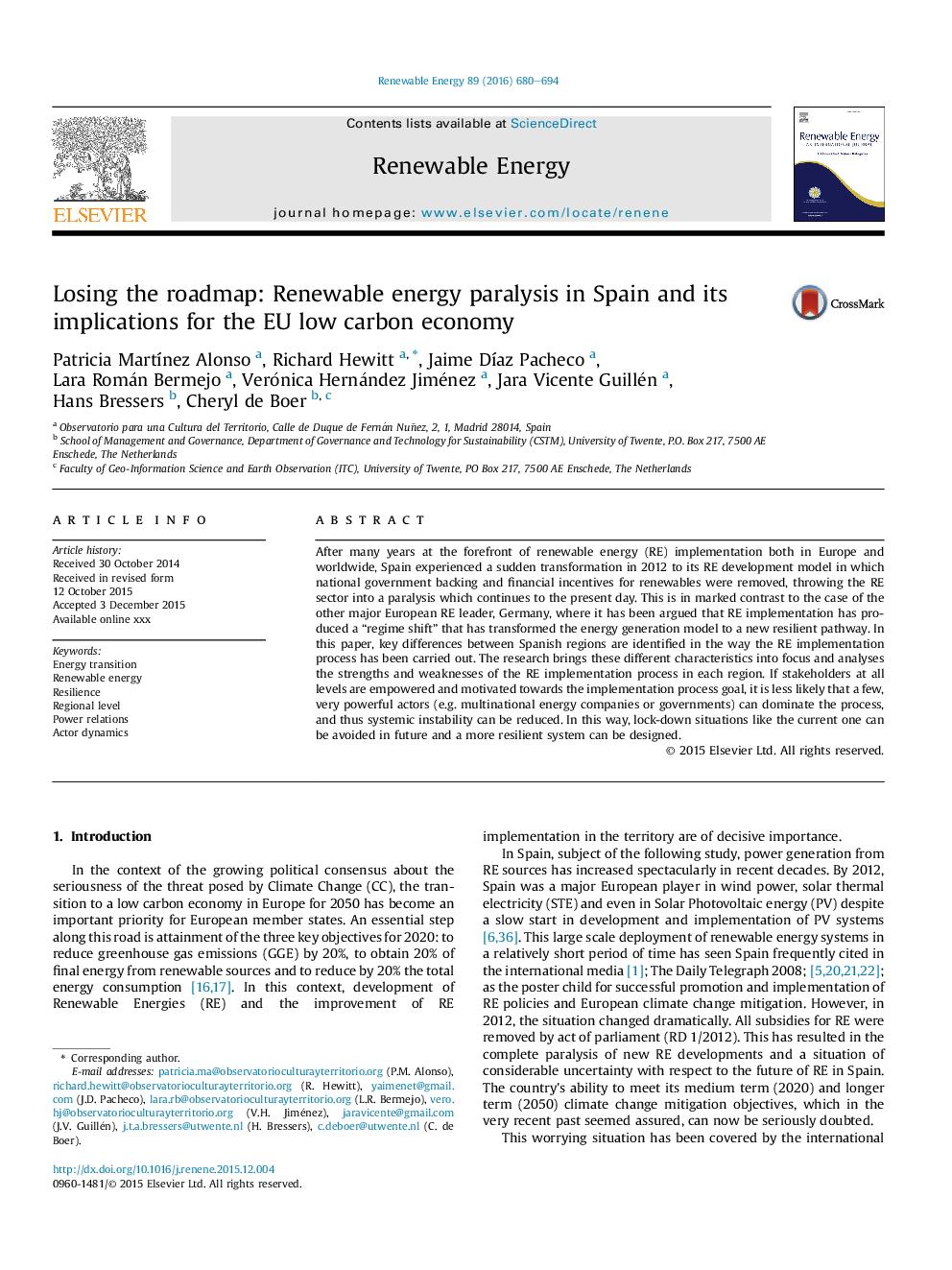| Article ID | Journal | Published Year | Pages | File Type |
|---|---|---|---|---|
| 6766525 | Renewable Energy | 2016 | 15 Pages |
Abstract
After many years at the forefront of renewable energy (RE) implementation both in Europe and worldwide, Spain experienced a sudden transformation in 2012 to its RE development model in which national government backing and financial incentives for renewables were removed, throwing the RE sector into a paralysis which continues to the present day. This is in marked contrast to the case of the other major European RE leader, Germany, where it has been argued that RE implementation has produced a “regime shift” that has transformed the energy generation model to a new resilient pathway. In this paper, key differences between Spanish regions are identified in the way the RE implementation process has been carried out. The research brings these different characteristics into focus and analyses the strengths and weaknesses of the RE implementation process in each region. If stakeholders at all levels are empowered and motivated towards the implementation process goal, it is less likely that a few, very powerful actors (e.g. multinational energy companies or governments) can dominate the process, and thus systemic instability can be reduced. In this way, lock-down situations like the current one can be avoided in future and a more resilient system can be designed.
Related Topics
Physical Sciences and Engineering
Energy
Renewable Energy, Sustainability and the Environment
Authors
Patricia MartÃnez Alonso, Richard Hewitt, Jaime DÃaz Pacheco, Lara Román Bermejo, Verónica Hernández Jiménez, Jara Vicente Guillén, Hans Bressers, Cheryl de Boer,
